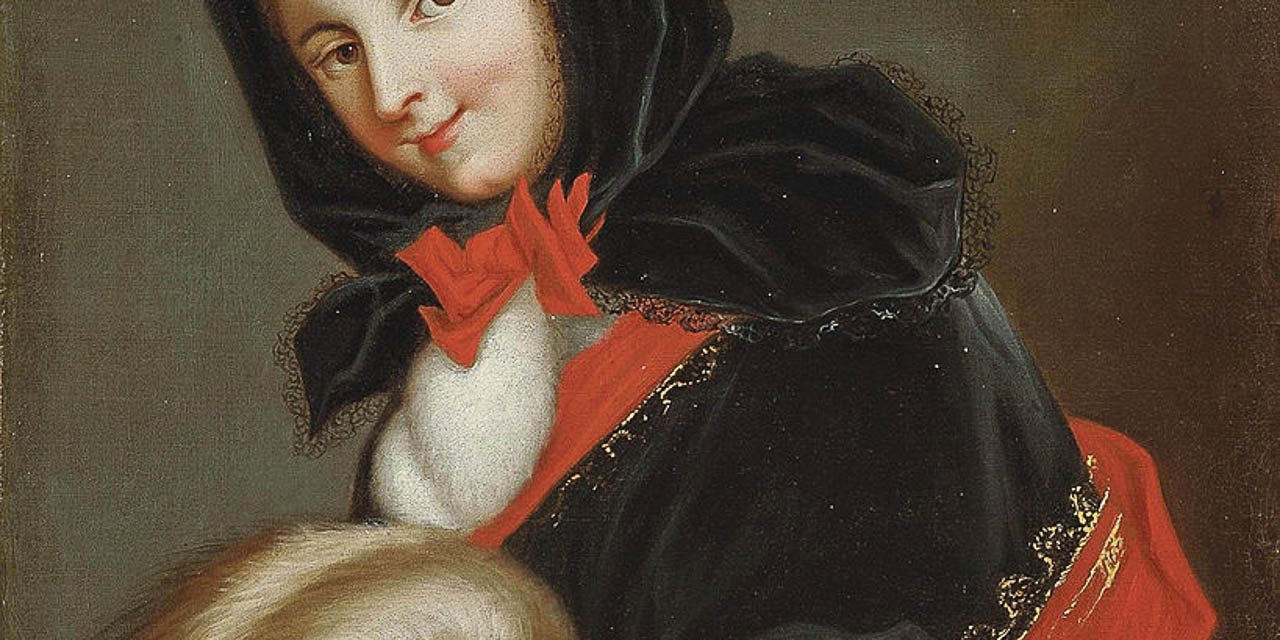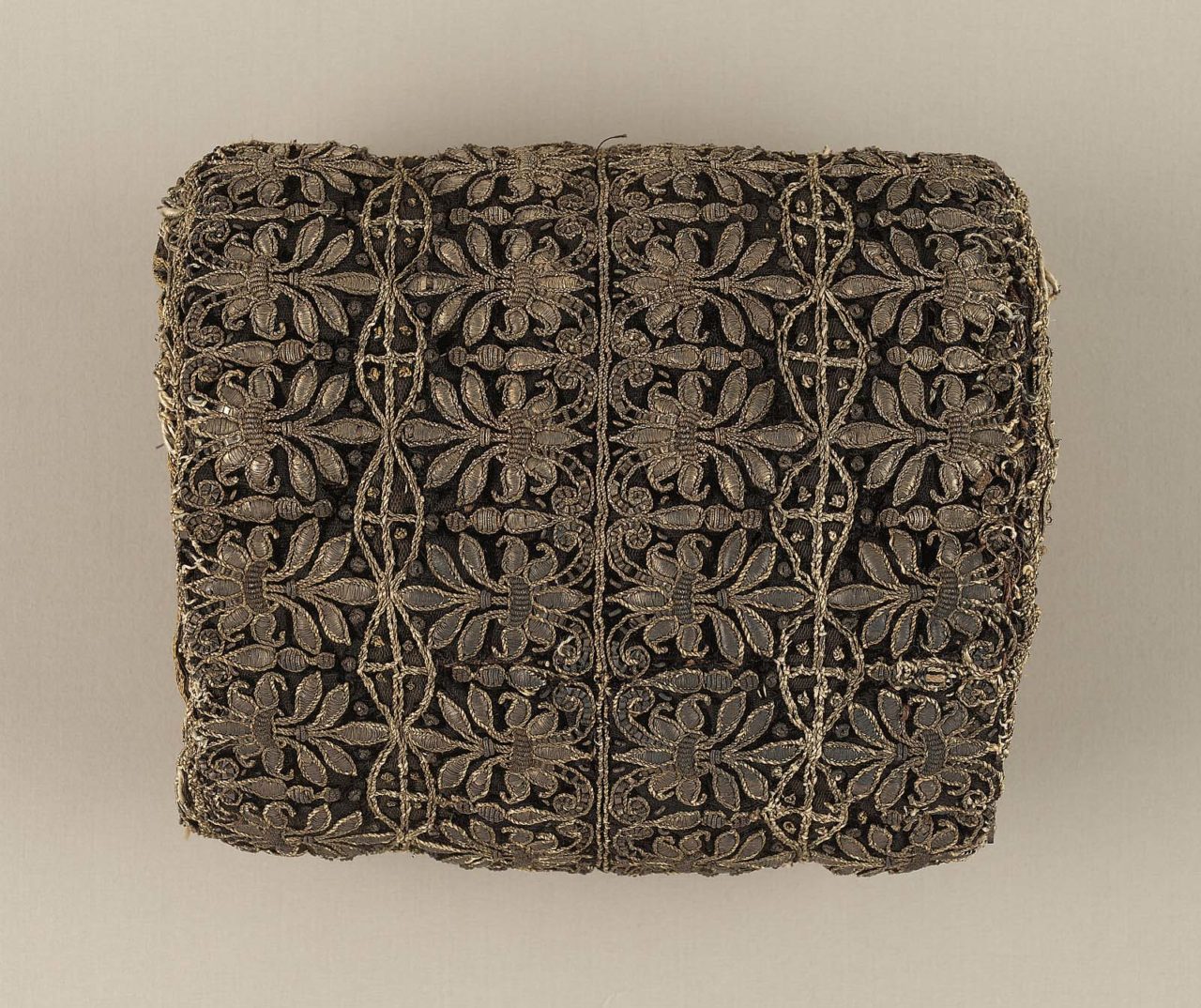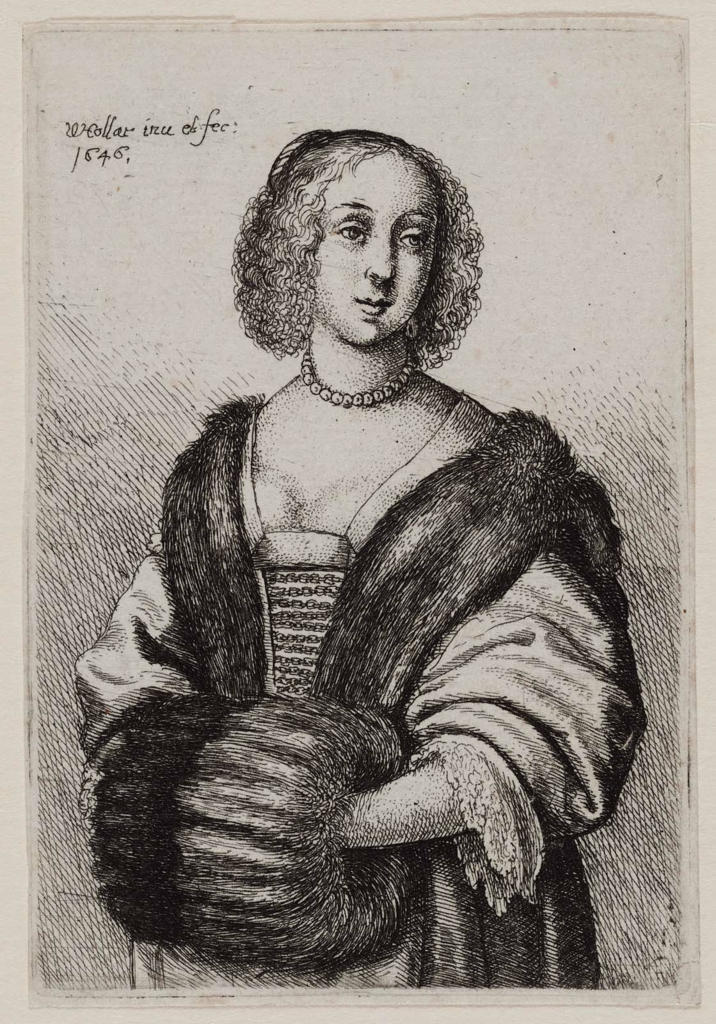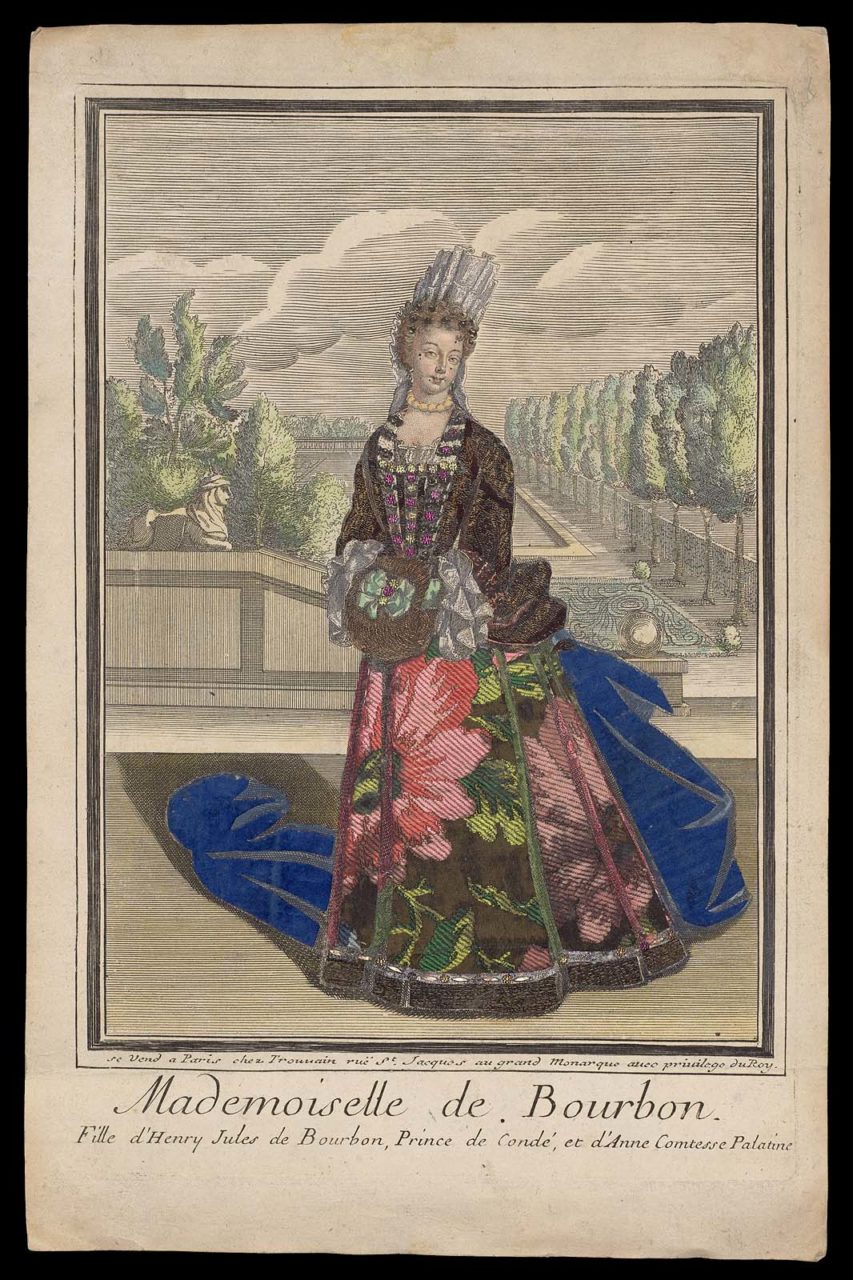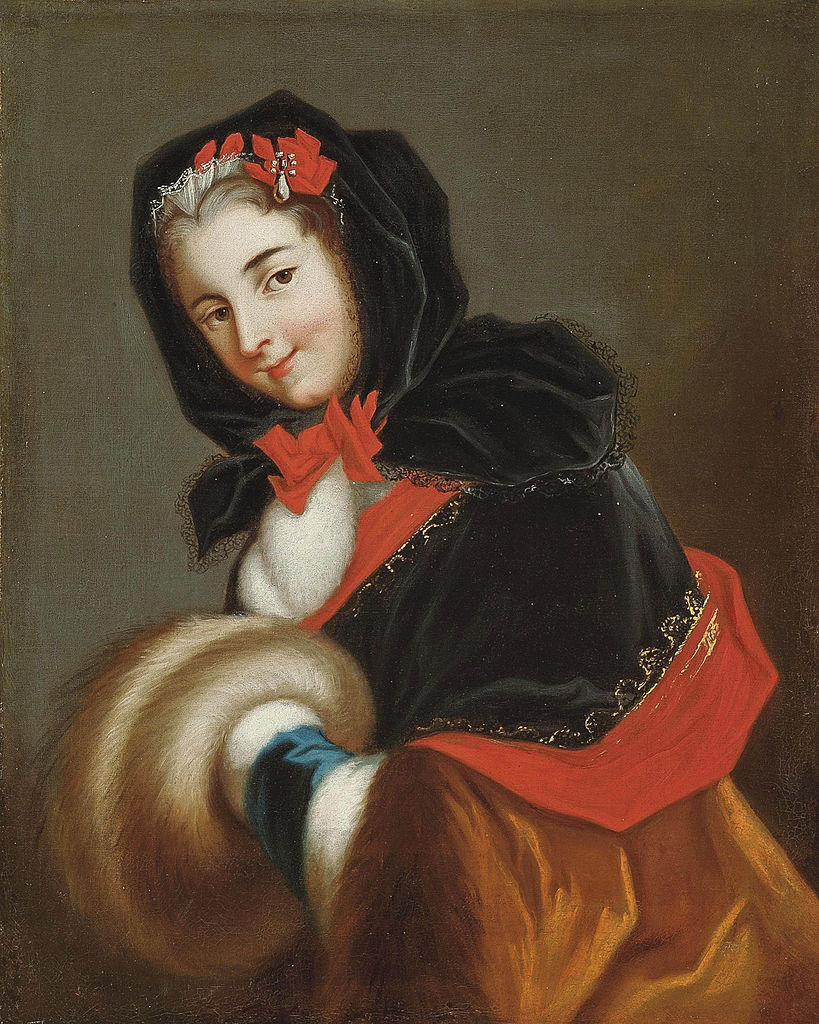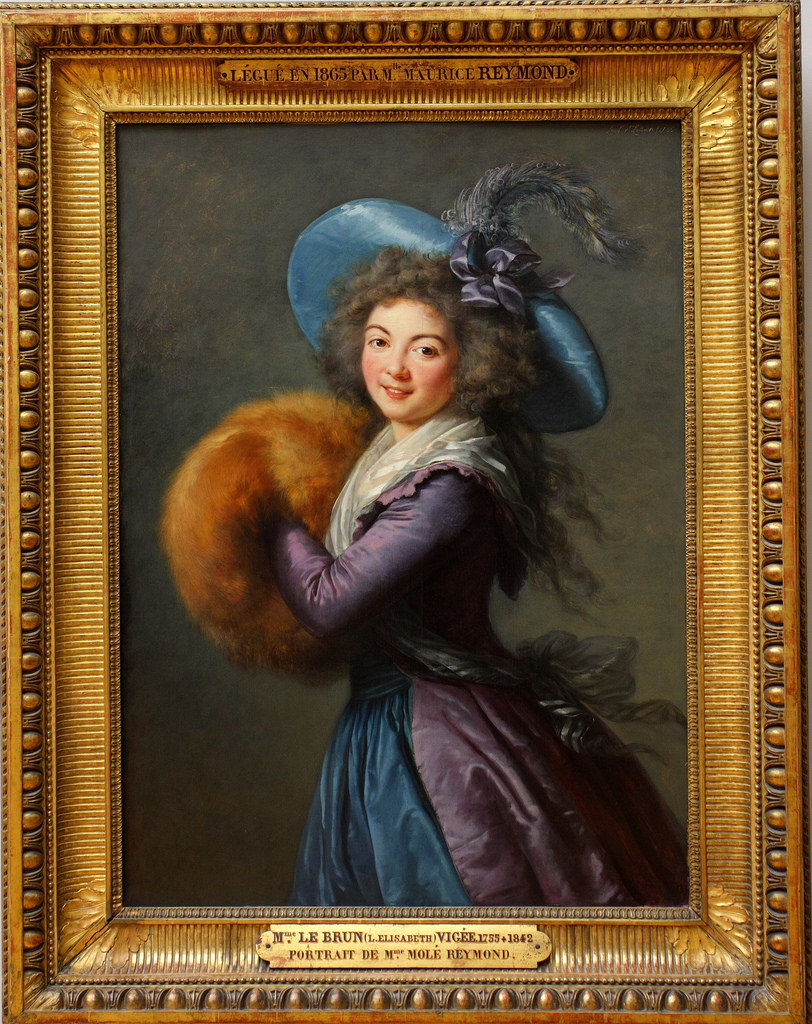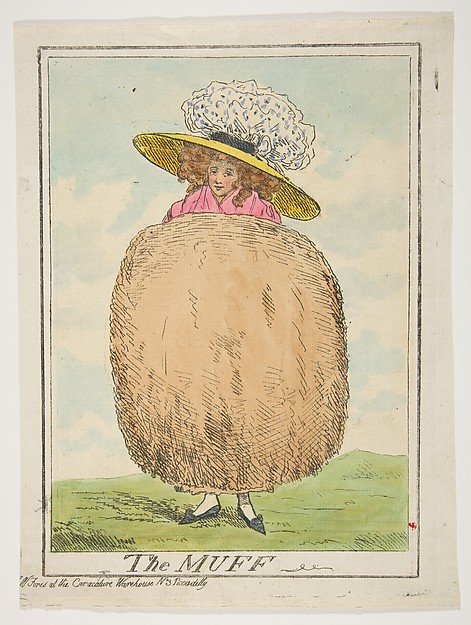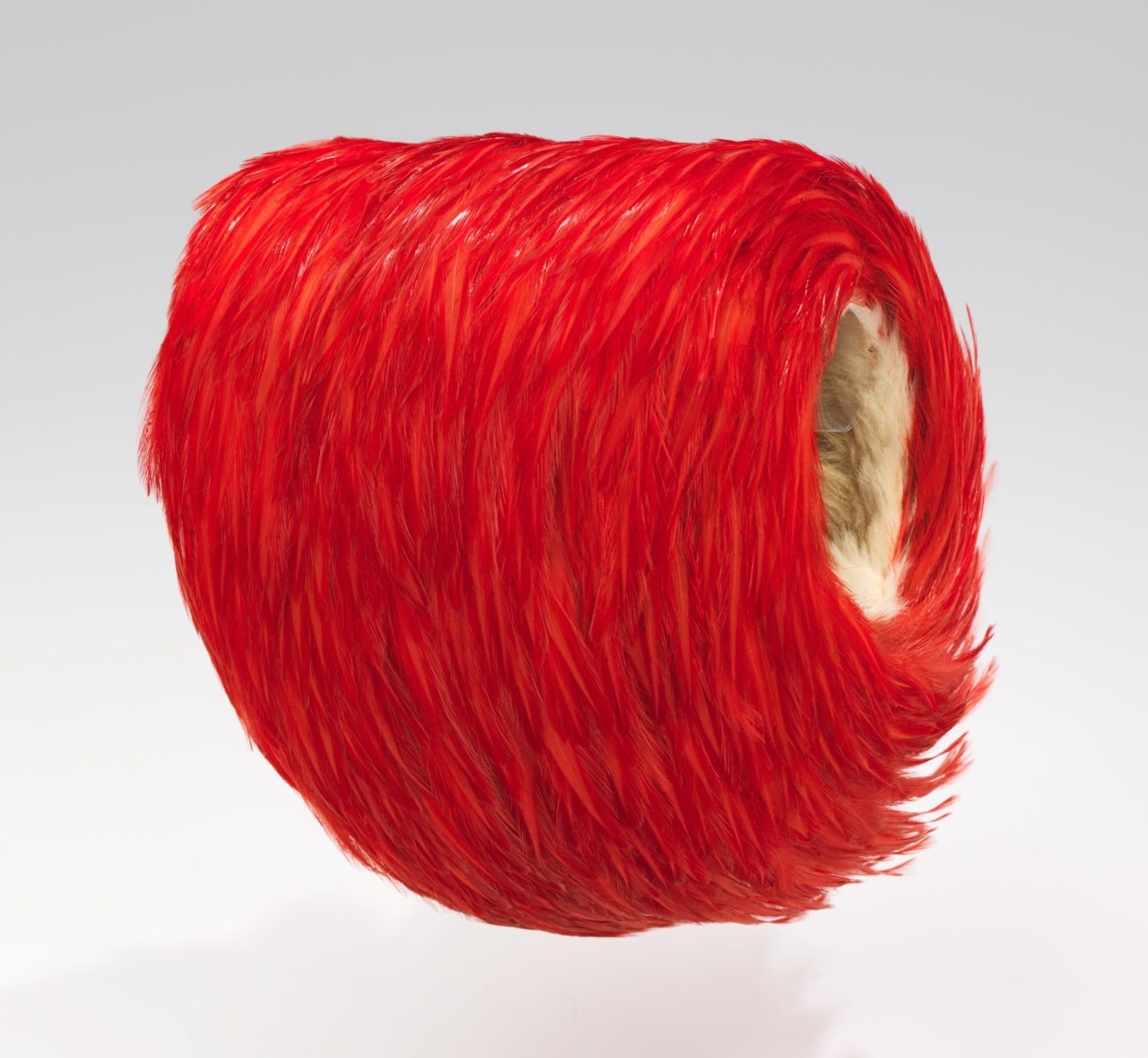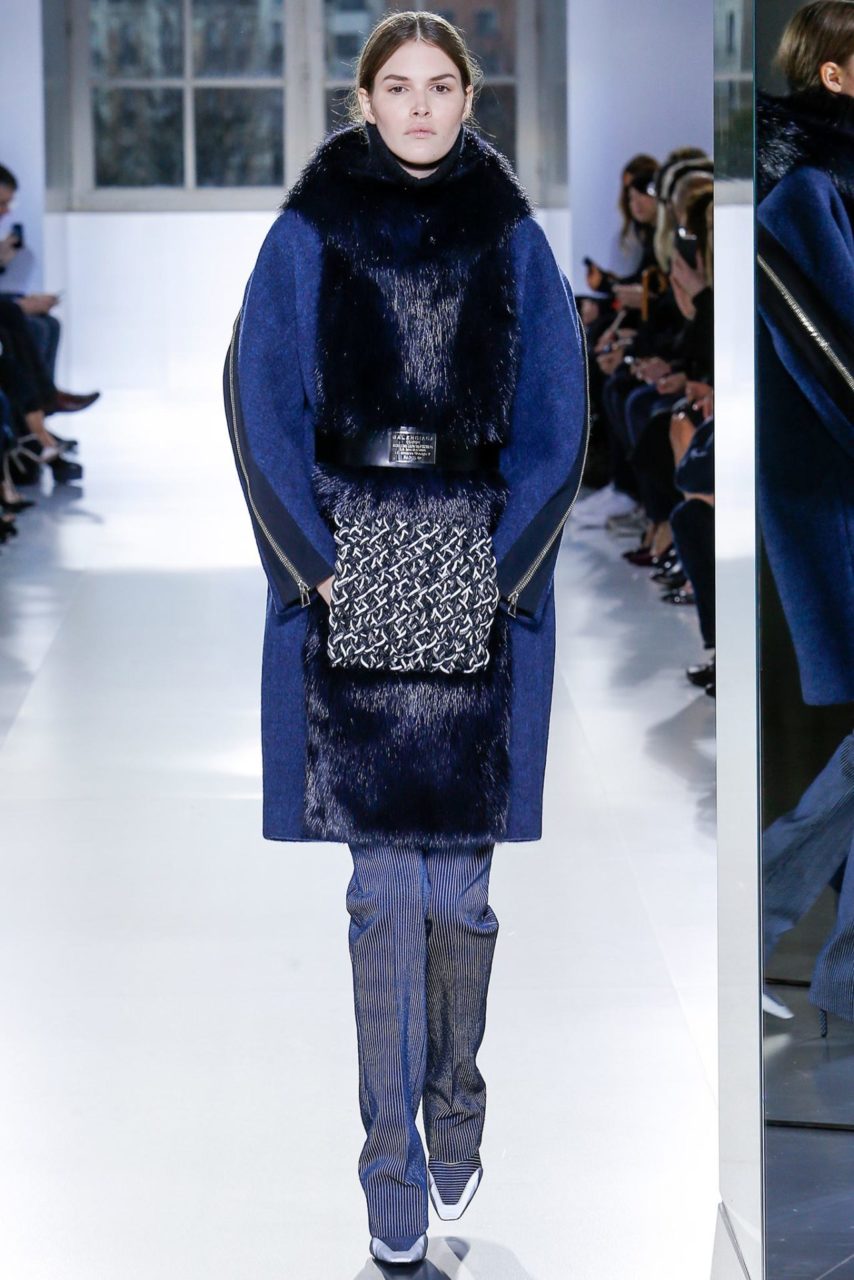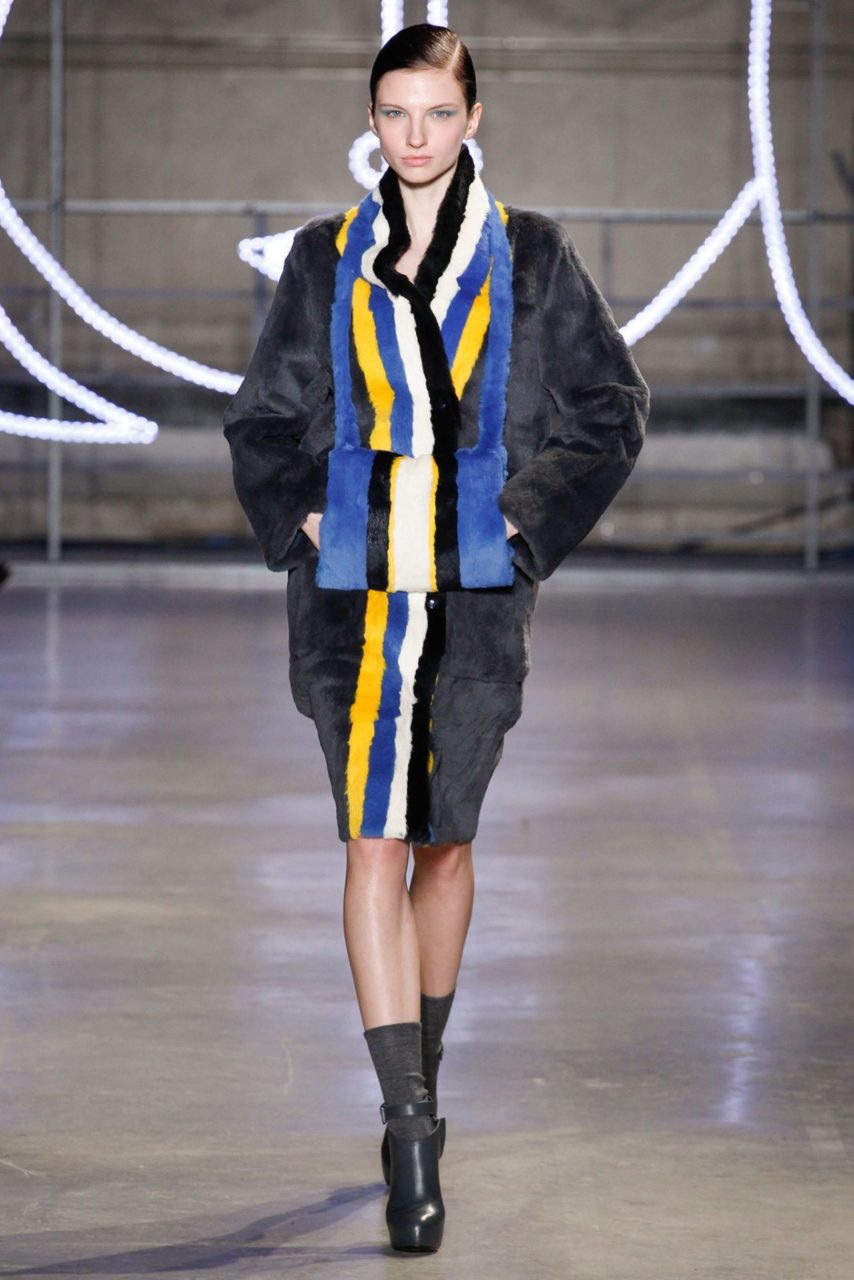A tubular padded covering of fur or fabric, into which both hands are placed for warmth.
The Details
The Encyclopædia Brittanica defines the muff as a: “usually cylindrical covering of fur, fabric, feathers, or other soft material, with open ends into which the hands are placed to keep them warm. Originally a purse and hand warmer in one, the muff was first introduced to women’s fashion in 1570, when fur trimming was becoming popular.” Figure 1 shows an example of an early muff from the late 16th century, covered in gilt metal embroidery.
In The Dictionary of Fashion History, the muff is defined as:
“A covering for both hands as a protection against cold, though also used as an elegant accessory. Tubular or flat, varying greatly in size; made of fur, feathers, fine fabrics, and padded within. In the 18th century a woman’s muff and tippet were usually made to match. A pocket for a card-case and purse was introduced in ladies’ muffs of the 1880s.” (Cumming)
In the 17th century they were used by both men and women; figures 2 & 3 show 17th-century muffs carried by women. In the 19th century, however, muffs were considered an essential accessory only for feminine dress and ranged from large down muffs to small fur or velvet ones matching the trim on a woman’s dress (“Muffs”).
Fig. 1 - Maker unknown (Italian). Muff, 1575-1600. Silk; velvet with gilt metal embroidery and plain weave silk and cotton wading; 16.5 x 18.8 x 9.5 cm (6 1/2 x 7 3/8 x 3.75 in). Boston: Museum of Fine Arts, 43.1827. The Elizabeth Day McCormick Collection. Source: MFA Boston
Fig. 2 - Wenceslaus Hollar (Bohemian, 1607-1677). Woman with muff and fur, 1646. Etching; 8.1 × 5.6 cm (3 3/16 × 2 3/16 in). Boston: Museum of Fine Arts, 2010.1254. Gift of Eijk and Rose-Marie van Otterloo. Source: MFA Boston
Fig. 3 - Engraver Antoine Trouvain (French, 1656-1708). Mademoiselle de Bourbon (dressed print), late 17th century. Engraving and etching on laid paper with hand-applied color, fabric swatches inlaid from behind. Boston: Museum of Fine Arts, 44.1226. The Elizabeth Day McCormick Collection. Source: MFA Boston
Fig. 4 - French School (18th century). Portrait of Louise Henriette de Bourbon, Duchesse de Chartres and Duchesse d'Orléans (1726-1759) in a fur trimmed cloak and muff, 18th century. Oil on canvas; 81.3 x 65.4 cm (32 x 25.7 in). Private Collection. Source: Wikimedia
Fig. 5 - Elisabeth-Louise Vigée-Le Brun (French, 1755-1842). Portrait of Madame Molé-Reymond, actress of the commedia dell’arte, 1786. Oil on panel; 104 x 76 cm. Paris: Louvre, M.I. 694. Bequest of Mlle M. Reymond, daughter of the model, 1865. Source: Louvre
A
ccording to The Fairchild Dictionary of Fashion, muffs continually made appearances throughout the centuries; Charlotte Mankey Calasibetta writes:
“muffs have been used since the second half of the sixteenth century and have appeared in women’s dress with great regularity. Large muffs were optional accessories for extremely stylish men in the 1690s and again in the 1770s to 1780s, while smaller ones were used in the first half of the eighteenth century. Muff-handbags were an interesting adaptation carried by women in the 1880s when handbags were new. Fur muffs for little girls were fashionable as recently as the 1960s.” (149)
Figures 4 & 5 depict large fashionable fur muffs being carried in the 18th century, when muffs became extremely large. An 18th-century British caricature (Fig. 6) mocks their immense size, showing a woman’s body completely hidden by the massive muff she holds in front of herself. For the first two decades of the 19th century, muffs were an essential accessory when thin chemise style dresses were in vogue (Fig. 7). Figure 8 shows a particularly brightly colored feather-adorned muff from the early 19th century. Their appeal lasted well into the 20th century; Ethel Barrymore, a popular American actress was photographed wearing one in 1901 (Fig. 9).
Fig. 6 - Attributed to Henry Kingsbury (British, active ca. 1775–98). The Muff, February 16, 1787. Hand-colored etching; 26.9 x 20.4 cm (10 9/16 x 8 1/16 in). New York: The Metropolitan Museum of Art, 69.524.40. Rogers Fund and The Elisha Whittelsey Collection, The Elisha Whittelsey Fund, 1969. Source: The Met
Fig. 7 - Morning walking dress for ladies and gentleman. Le Beau Monde, or Literary & Fashionable Magazine, 1807. Hand-colored engraving. New York: Metropolitan Museum of Art, b17509853. Source: The Met
Fig. 8 - Maker unknown. Muff, early 19th century. Feathers, wool. New York: The Metropolitan Museum of Art, 2009.300.1397. Gift of the Brooklyn Museum, 2009; Gift of Mrs. Leo Wallerstein, 1920. Source: The Met
Fig. 9 - Burr McIntosh. Ethel Barrymore, ca. 1901. Photograph. Washington: Library of Congress, cph 3b43435. Source: Library of Congress
Its Afterlife
Muffs, fundamentally a practical accessory for cold winters, make regular returns to fashionability; for example, Carrie Bradshaw was shown carrying one in the 2004 Sex and the City movie (Fig. 10).
In a contemporary digital age where hands-free options are considered a necessity, modern muffs are the chicest form of convenience. During fall 2014, accessories designers returned to the 16th century and reimagined muffs for the modern woman. Muffs that were reminiscent of fashionable centuries before made appearances in the fall 2014 collections of Balenciaga (Fig. 11) and JC de Castelbajac (Fig. 12). They also looked luxuriously plush at BCBG Max Azria (Fig. 13) and Céline (Fig. 14), where the vibrant hues seen earlier in the 19th century once again featured.
Fig. 10 - Costume Design by Patricia Field & Molly Rogers. Sex and the City: An American Girl in Paris (Part Deux), 2004. Source: Pinterest
Fig. 11 - Balenciaga. Ready-to-Wear, Fall 2014. Model: Vanessa Moody. Photo: Monica Feudi / Feudiguaineri.com. Source: Vogue
Fig. 12 - JC de Castelbajac (Morrocan/French, 1949-). Ready-to-Wear, Fall 2014. Photo: Marcus Tondo / Indigitalimages.com. Source: Vogue
Fig. 13 - BCBG Max Azria. Ready-to-Wear, Fall 2014. Photo: Yannis Vlamos / Indigitalimages.com. Source: Vogue
Fig. 14 - Céline. Ready-to-Wear, Fall 2014. Model: Brogan Loftus. Photo: Monica Feudi / Feudiguaineri.com. Source: Vogue
References:
- Calasibetta, Charlotte Mankey and Phyllis Tortora. The Fairchild Dictionary of Fashion. Third ed. New York: Fairchild Publications, 2003.
- Cumming, Valerie, C. W. Cunnington, and P. E. Cunnington. “Muff.” In The Dictionary of Fashion History, 137. Oxford: Berg Publishers, 2010. Accessed September 23, 2016.
- “Muff | Clothing.” Encyclopedia Britannica. Accessed July 30, 2017. https://www.britannica.com/topic/muff.
- “Muffs.” In Fashion, Costume, and Culture: Clothing, Headwear, Body Decorations, and Footwear through the Ages, edited by Sara Pendergast and Tom Pendergast, 540-542. Vol. 3, European Culture from the Renaissance to the Modern Era. Detroit: UXL, 2004. Gale Virtual Reference Library (accessed September 23, 2016).
- Watt, Judith. “Muffs.” In The Berg Companion to Fashion, edited by Valerie Steele. Oxford: Bloomsbury Academic, 2010.

